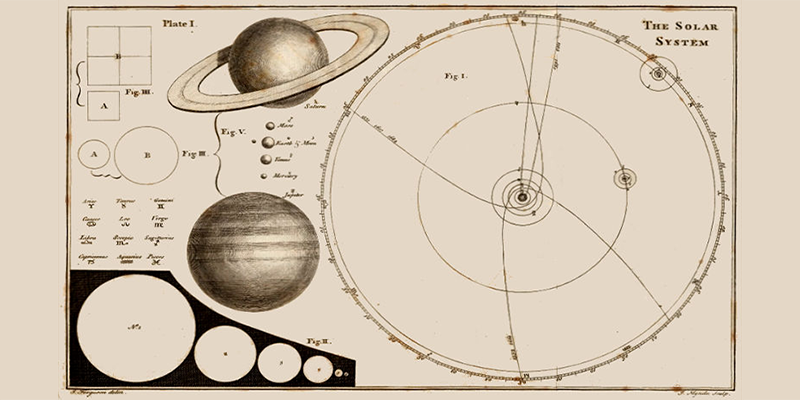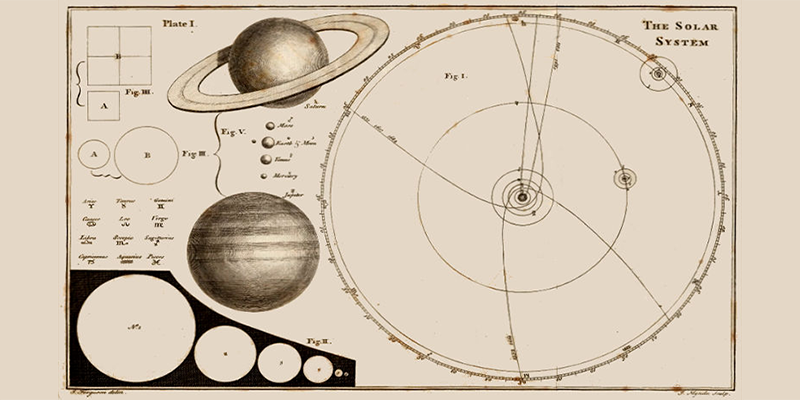The Final Piece in the Solar System-Stability Puzzle?
If Konstantin Batygin liked to gamble, he would stake that the latest explanation for the Solar System’s stability—which a team in France announced today—will not be the final word on the problem. “The Solar System-stability problem has been decisively solved so many times over the last four centuries that if I was to bet on one thing it would be that this new work is not the end,” says the planetary scientist from the California Institute of Technology, who wasn’t involved in the study. But, he adds, this new study does take our understanding “to the next level.”
The Solar System-stability problem Batygin refers to is whether the motion of the planets in our Solar System is stable. Isaac Newton posed the problem back in the 17th century and was the first to tackle it—though he didn’t commit one way or the other. The same problem was then addressed by the likes of Pierre-Simon Laplace, Joseph-Louis Lagrange, Carl Friedrich Gauss, Henri Poincaré, and Siméon Poisson. Each time a solution was thought to have been found, another question was raised. Now Federico Mogavero and his colleagues at the Paris Observatory present a theory that they hope will stand the test of time [1]. The result could potentially close the door on centuries of work, Batygin says. History will tell if that is indeed the case.
Scientists and philosophers have mused over the workings of the Solar System since time immemorial. But it wasn’t until Newton started to investigate the problem that the tools of physics—the laws of motion, force, and gravity that Newton himself derived—were applied to planetary motion. At that time, the Solar System’s six inner planets were known. Newton’s laws of physics predict that as each of these planets tracks along its orbit, it will exert a periodically varying gravitational force on all the others. These changes in the gravitational forces are tiny. But over the billions of years the planets have been and will be orbiting the Sun, the impact should accumulate.
Newton thus wondered: Does the net effect of these periodically varying forces average to zero, so that the planets’ motions remain stable over long times, or is there a nonzero net value that causes the planets’ paths to change, potentially destabilizing the system? Ultimately, Newton hedged his bets. He reasoned that the motion of the planets was unstable, and thus that the Solar System would occasionally fall apart. But he thought that when that happened, God would jump in and restore order, putting the planets back where they started. At the end of his book Opticks, the scientist writes, “…blind Fate could never make all the Planets move one and the same way in Orbs concentrick, some inconsiderable Irregularities excepted, which may have risen from the mutual Actions of Comets and Planets upon one another, and which will be apt to increase, till this System wants a Reformation.”
“[Newton’s] idea was a bit controversial, even back then,” says Jacques Laskar, who contributed to the new study and started working on the planet-stability problem in the late 1980s. “[Gottfried Wilhelm] Leibniz, Newton’s competitor at the time, wrote to the Princess of Wales that [Newton] must have a very poor view of the power of God to think that God did not make a perfect clock and that [God] needs to mend it from time to time.”
A century later, Laplace and Lagrange took up the Solar System challenge. Working separately but exchanging letters, the duo studied the problem using a perturbation theory, where the perturbations represent the changes in the gravitational forces each planet experiences as it moves around the Sun on its elliptical path. From this theory, Laplace and Lagrange predicted that the longest radii of the planets’ orbits remained unchanged when pulled on by the others: the Solar System was stable.
The story could easily have ended there, except for one glaring problem—the result appeared to contradict observations of the planets’ motions. Well before Newton, Laplace, and Lagrange studied celestial mechanics, Johannes Kepler had noted that Jupiter and Saturn were on the move. Comparing his observations to those of earlier astronomers, Kepler found that the orbits of the Solar System’s two largest planets had shifted. Such a behavior is at odds with the expectations of a stable Solar System. Laplace initially explained away this issue by attributing the orbit-path shifts to gravitational interactions with passing comets but later found that those shifts arose from the interactions of the two giant planets.
Over the next 150 years, scientists flip-flopped back and forth on whether the Solar System is stable—Poincaré’s calculations indicated it might not be, while Vladimir Arnold’s suggested it was, if the masses of the planets were sufficiently small—but the community largely dropped the problem. “Quantum mechanics was a much more pressing and interesting problem in the early 20th century,” Batygin says. Then in the 1980s, the computer arrived, and everything changed.
With the advent of computers, it became possible to solve more complex sets of equations and, later, to perform large-scale numerical experiments. “These showed clear hints that Mercury could unravel before the Sun burns out,” Batygin says. Scientists delved into the Solar System-stability problem with renewed vigor.
Today, the community agrees that the motions of Earth and our neighboring planets are unstable. The missing element in determining the answer was the incorporation of chaos into the trajectories of the orbits. Scientists including Poincaré knew that chaos had to be factored in, but its full impact was not fully appreciated until billions of years of planetary motion could play out on a computer.
Over the past four decades, Laskar, Batygin, and others have answered questions such as: Over what time period can we fully predict the motion of all the Solar System’s planets? Answer: 60 million years. What will the beginning of the end of the Solar System look like? Answer: It starts with Mercury going rogue. Mercury’s orbit locks with Jupiter’s, elongating the inner planet’s path and setting Mercury on a collision course with either Venus or the Sun.
One problem however remained stubbornly unsolved. Theories and simulations indicated that the individual motions of Mercury and of the other terrestrial planets (Venus, Earth, and Mars) should destabilize in a few million years but that the Solar System remains intact for billions of years—the likelihood of Mercury obliterating itself in the next 5 billion years is only 1%, for example. (No need to head for a bunker, yet). So, how to reconcile those two timescales?
That problem now appears to have found a solution (see Viewpoint: Tackling the Puzzle of Our Solar System’s Stability). Laskar and his colleagues show that there is a hidden structure within the chaotic motion of the terrestrial planets that keeps the fast destabilization in check and prevents each planet from wandering too far in any direction. “The fast chaos manifests on the position of the planet along a given orbit and not on the shape of the orbit,” says Alessandro Morbidelli a planetary scientist at the Côté d'Azur Observatory, France. “That means that overall the planets stay on the same paths and so don’t collide,” he adds. Laskar agrees. “If this structure wasn’t there, the Solar System would be much more unstable and we might not be here.”
–Katherine Wright
Katherine Wright is the Deputy Editor of Physics Magazine.
References
- F. Mogavero et al., “Timescales of chaos in the inner Solar System: Lyapunov spectrum and quasi-integrals of motion,” Phys. Rev. X 13, 021018 (2023).





